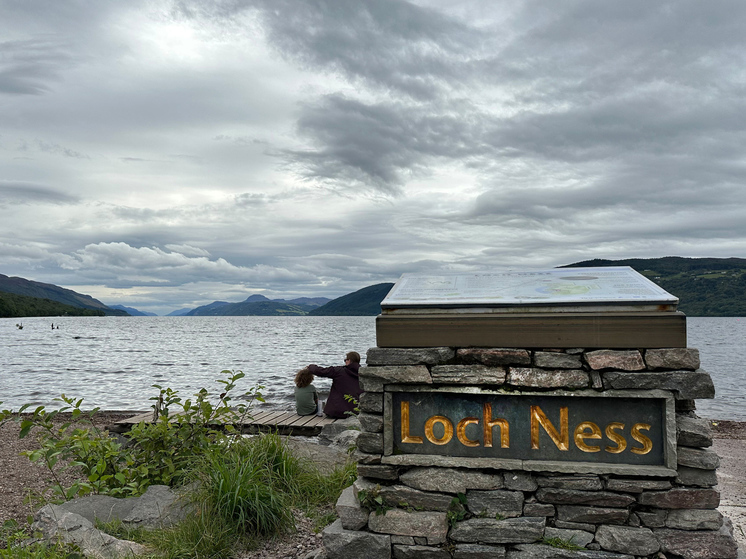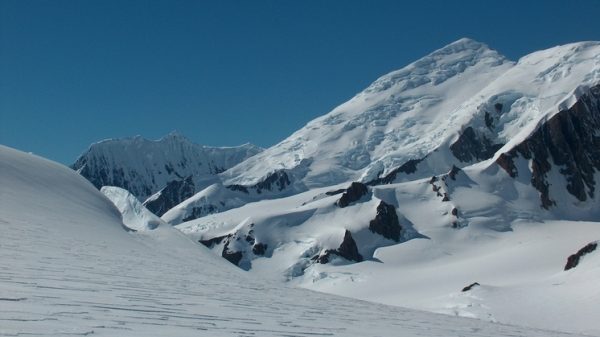The mysterious pond is too cold for the prehistoric reptile
A new study seems to have put an end to the mystery of the famous monster Nessie. Ninety years ago – on November 12, 1933 – a man named Hugh Gray took the first known photograph of an “unknown” creature lurking in Scotland’s Loch Ness. This photo formed the basis of the theory that a terrible monster lives in the lake. Scientists continue to explore this body of water, which attracts the attention of numerous enthusiasts in search of the mysterious reptile, and claim that this creature simply cannot live in the lake.

A recent study has revealed new evidence of the unusually dark color of the water in Loch Ness. A team of scientists discovered that peat was being washed into the lake from surrounding rivers and streams, turning the water the color of tea. The same flows from the taps in guest houses in the neighboring village of Drumnadrochit.
“You could swim next to a 400-foot submarine and not see it. It's like a lost world down there. Loch Ness is so fascinating that it can cause mirages,” — Alan McKenna, founder of the Loch Ness Exploration research group, talks about the features of the lake.
The biggest secret of all is — what is at the bottom of the lake.
«Not a single person is convinced that a multi-toothed snake or a long-necked plesiosaur lives in the depths. Rather, the idea of a monster may differ from person to person,” — says the skipper of the Loch Ness project, Alistair Matheson, who takes those who want to get to know the lake better, in a conversation with CNN.
Many people are still convinced that they saw something in the lake. But most things can be explained scientifically.
According to Alan McKenna, it is worth studying all the things that cannot be explained. He believes, “if it turns out that all this is caused by natural phenomena, that’s normal.”
But what everyone agrees on is that the lake is unusual. Scientists note that despite winter temperatures, Loch Ness never freezes due to the thermocline effect, which means colder water sinks and is replaced by warmer water below. These shifting layers of water at different temperatures create huge underwater waves, forming a surface current that can carry logs and other debris upwind, which can be mistaken for the tail or neck of a creature swimming upstream.
Ongoing controversy over monsters from the depths of the lake continue. From time to time, fountains of water appear, swirling columns of fog and air, which, when the water is calm and their size cannot be determined, can look like the long neck of a moving animal.
McKenna recalls his encounter with one of these phenomena: “I heard a strong splash to my right, I did not capture the splash on film. But what I really caught next was the huge splashes rising from the water.
The famous “humps” Nessies are usually caused by boats. Naturalist Adrian Shine explained back in the last century: “When heavy ships pass through a long, deep and narrow lake such as Loch Ness, it can create a special phenomenon, the ripples of which look remarkably like tubercles when viewed from a low angle.” such as the coastline.»

In addition, the existence of the Loch Ness monster is refuted by its habitat itself. A creature that looks like a dinosaur is still a reptile. The study showed that there is no reptile DNA in the water. It also states that it is too cold for such a creature to survive (the water temperature in the lake is always 4-5 degrees Celsius) and impenetrable water does not allow plants to live, which automatically destroys the food chain for the animal.
Who else maybe a mysterious “monster”? Before the photo of the alleged monster was taken, in 1933 lakefront hotel manager Eldie Mackay ran into the bar and said she saw a “whale-like aquatic animal.” This is more true for many researchers, because Loch Ness is connected to the sea, as well as to numerous rivers. In 2019, a study found significant amounts of eel DNA in the water, which could confirm the theory that Nessie — it's an overgrown eel.
In a study published in JMIRx Bio, scientist Flo Foxon studied the bioworlds of bodies of water. According to the findings, the chances of meeting a 1-meter eel in Loch Ness are approximately 1 in 50 thousand. The likelihood of finding much larger eels, however, is practically zero, which debunks the theory.
The existence of the monster has never been proven, but it also cannot be disproved. And this is what supports supporters of the Loch Ness Monster theory.

























































Свежие комментарии